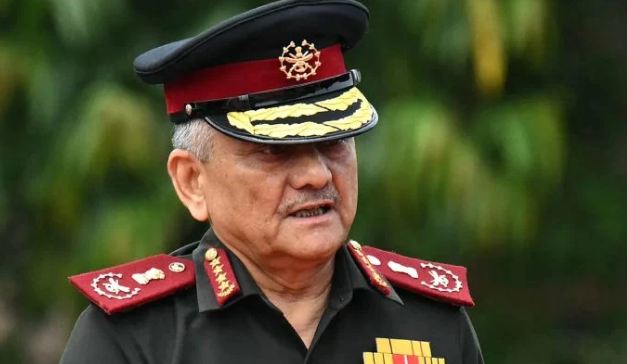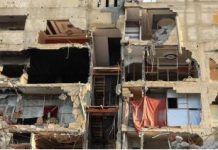New Delhi, MAY 31: In a major development, Indian Chief of Defence Staff General Anil Chauhan has officially acknowledged the loss of Indian aircraft during a recent military confrontation with Pakistan, Bloomberg reported in an exclusive interview.
General Chauhan admitted to Bloomberg while attending the Shangri-La Dialogue in Singapore that “warplanes were lost” during the aerial exchange, marking the first formal recognition by a top Indian military official of such losses. “We made mistakes during the air battle, which we have since realized and corrected,” he stated, without disclosing the exact number of aircraft downed.
This statement lends weight to Pakistan’s claim that it shot down multiple Indian fighter jets during the skirmish earlier this month. Pakistan claims it shot down six Indian aircraft — a figure India strongly disputed.
While General Chauhan rejected Pakistan’s specific number, terming the claim of six downed jets as “absolutely incorrect”, he did not offer an alternative count. Bloomberg noted his repeated use of the word “they” in reference to Pakistan, adding to the ambiguity.
In the interview, the Indian military chief emphasized the importance of understanding the causes of the losses rather than just the outcome. “What is important is that, not the jet being down, but why they were being down,” he remarked. “Why they were down, what mistakes were made – that are important. Numbers are not important.”
General Chauhan also revealed that India switched tactics after suffering losses in the air on the first day of conflict with Pakistan and established a decisive advantage before the two neighbours announced a ceasefire three days later.
Also Read: Senior BJP leader admits Pakistan shot down 5 Indian jets
“So we rectified tactics and then went back on the 7th, 8th and 10th in large numbers to hit air bases deep inside Pakistan, penetrated all their air defences with impunity, carried out precision strikes.” The Indian air force “flew all types of aircraft with all types of ordinances on the 10th”, he claimed.
India has previously claimed its missiles and drones struck at least eight Pakistani air bases across the country that day, including one near Islamabad. The Pakistan military says that India did not fly its fighter jets again in the conflict after suffering losses on May 7.
India’s director general of air operations, Air Marshal A.K. Bharti, had told a press conference earlier in the month that “losses are a part of combat” and that India had downed some Pakistani jets. Islamabad has denied it suffered any losses of planes but has acknowledged its air bases suffered some hits although losses were minimal.
Addressing wider geopolitical concerns, he downplayed the narrative that the United States mediated to prevent a full-scale war or nuclear confrontation between the two nuclear-armed neighbours. “That view is far-fetched,” he said.
“I personally feel that there is a lot of space between conduct of conventional operations and the nuclear threshold,” General Chauhan said.
No nuclear worries
Some of the attacks were on bases near Pakistan’s nuclear facilities, but they themselves were not targeted, media reports have said.
“Most of the strikes were delivered with pinpoint accuracy, some even to a metre, to whatever was our selected mean point of impact,” Chauhan said.
Chauhan, and Pakistan’s chairman of the joint chiefs of staff, Gen Sahir Shamshad Mirza, have both said there was no danger at any time during the conflict that nuclear weapons were considered.
“I think there’s a lot of space before that nuclear threshold is crossed, a lot of signalling before that, I think nothing like that happened,” Chauhan said. “There’s a lot of space for conventional operations which has been created, and this will be the new norm.
“It’s my personal view that the most rational people are people in uniform when conflict takes place,” he added. “During this operation, I found both sides displaying a lot of rationality in their thoughts as well as actions. So why should we assume that in the nuclear domain there will be irrationality on someone else’s part?”
Chauhan also said that although Pakistan is closely allied with China, there was no sign of any actual help from Beijing during the conflict.
“While this was unfolding from (April) 22nd onwards, we didn’t find any unusual activity in the operational or tactical depth of our northern borders, and things were generally all right.”
Also Read: Pakistan, India close to border troop reduction: CJCSC
Asked whether China may have provided any satellite imagery or other real-time intelligence to Pakistan during the conflict, Chauhan said such imagery was commercially available and could have been procured from China as well as other sources.
He added that while hostilities had ceased, the Indian government had made it clear it would “respond precisely and decisively should there be any further terror attacks emanating from Pakistan.”
“So that has its own dynamics as far as the armed forces are concerned. It will require us to be prepared 24/7.”
This marks the first public admission from the Indian side regarding the aerial losses, indirectly strengthening Pakistan’s stance on the issue at the international level.
Senior Bharatiya Janata Party (BJP) leader and former Rajya Sabha member Subramanian Swamy has also made a startling revelation, claiming that five Indian Air Force (IAF) aircraft were shot down by Pakistan during a recent clash between the two nuclear-armed neighbours.
In a recent interview, Swamy admitted that Pakistan’s retaliation was both “vigorous and effective”, dealing a heavy blow to the Indian Air Force. He expressed concern over what he termed a “serious failure” of the Indian defence apparatus and called for accountability from Prime Minister Narendra Modi.
Swamy did not provide specific details about the timing or nature of the incident, but emphasized that the French-made fighter jets used by the Indian Air Force underperformed during the conflict. He contrasted them with Chinese aircraft, stating that Chinese jets had shown better performance under similar circumstances.
The heaviest fighting in decades between nuclear-armed India and Pakistan was sparked by an April 22 attack in India-held Kashmir that killed 26 people, most of them tourists. New Delhi blamed the incident on “terrorists” backed by Pakistan, a charge denied by Islamabad.
On May 7, Indian jets bombed what New Delhi called “terrorist infrastructure” sites across the border. Pakistan has said it downed six Indian planes, including at least three Rafale fighters, in the initial clashes.
The ceasefire was announced on May 10 after bitter fighting in which both sides used fighter jets, missiles, drones, and artillery.

















